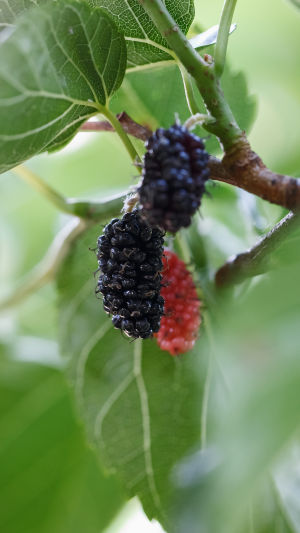Mulberries, those small fruits packed with natural goodness, have always been a beloved favorite. These deep purple gems emit a delightful fruity fragrance and not only taste delicious but also offer fantastic health and beauty benefits.
Mulberries are known for their distinctive sweet and sour flavor. They are rich in essential nutrients necessary for our bodies. One remarkable aspect of mulberries is their ability to grow in a pristine environment, free from pollution.
The nutritional profile of mulberries is quite impressive. They contain essential amino acids, anthocyanins, flavonoids, malic acid, resveratrol, various vitamins, and proteins, as well as elements like zinc, potassium, magnesium, and phosphorus.
If you've ever indulged in mulberries, you might have noticed that your hands and mouth change color after eating them. This color change is a clear indication of the high anthocyanin content in mulberries.
Anthocyanins are potent antioxidants found in these fruits.
They, along with other substances like resveratrol, play a crucial role in scavenging free radicals, promoting antioxidant activity, regulating the immune system, reducing blood lipids, and countering mutagenesis.
In fact, the anthocyanin content in mulberries surpasses that of grapes by fivefold.
This is why anthocyanins are often included in various health products aimed at slowing down the aging process and enhancing skin beauty.
In addition to being a rich source of antioxidants, mulberries are also packed with protein, boasting a content of 2.32%. This protein plays a crucial role in regulating physiological functions and maintaining metabolism. Moreover, mulberries contain an adequate proportion of sugar (6.54%) and acids (0.55%).
The right amount of sugar is indispensable for supporting normal bodily functions, while acids contribute to enhancing metabolism regulation and maintaining a healthy acid-base balance in the body.
Mulberries also have a high content of polyphenolic compounds, with a total phenol content of 4.74mg/g, flavonoids at 1.18mg/g, and anthocyanins at 0.79mg/g.
These compounds offer numerous health benefits, such as preventing atherosclerosis, lowering cholesterol levels, and providing antioxidant and anti-radiation effects. This makes mulberries not only a delicious treat but also a highly valuable nutritional and medicinal resource.
For those interested in purchasing mulberries, it's wise to keep a few tips in mind. Look for mulberries with fuller, thicker particles, as they tend to have less water content and are firmer, indicating better quality.
Darker-colored mulberries are usually sweeter and have a more raw interior, which can be a preferred choice for some. However, be cautious, as excessively dark color may indicate potential artificial dyeing.





